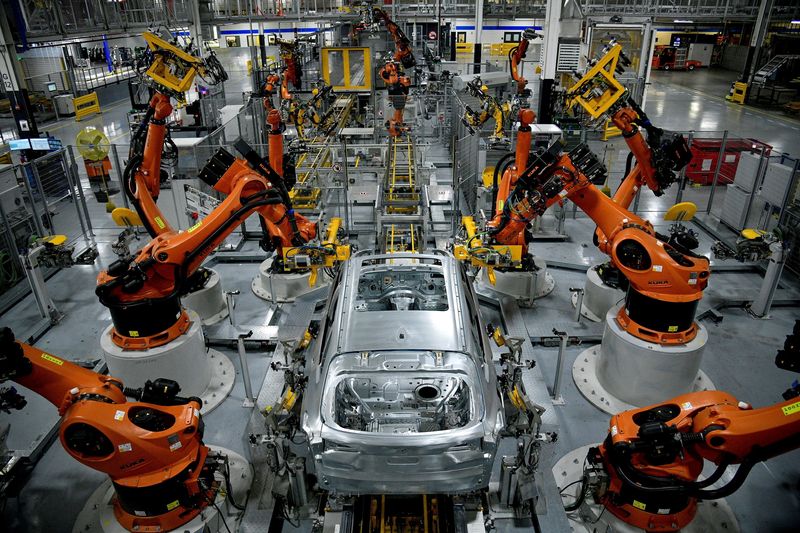U.S. manufacturing sector steady in August; price pressures ease further – ISM
2022.09.01 17:14

FILE PHOTO: Autonomous robots assemble an X model SUV at the BMW manufacturing facility in Greer, South Carolina, U.S. November 4, 2019. REUTERS/Charles Mostoller/File Photo
WASHINGTON(Reuters) – U.S. manufacturing grew steadily in August as employment and new orders rebounded, while a further easing in price pressures strengthened expectations that inflation has likely peaked.
The Institute for Supply Management (ISM) said on Thursday that its manufacturing PMI was at 52.8 last month, unchanged from July. A reading above 50 indicates expansion in manufacturing, which accounts for 11.9% of the U.S. economy.
Economists polled by Reuters had forecast the index falling to 52.0. Manufacturing is showing resilience despite a shift in spending back to services as well as an ebb in business confidence amid rapidly rising interest rates, which have increased the risk of a recession.
The Federal Reserve has hiked its policy rate by 225 basis points since March to tame inflation.
The ISM survey’s forward-looking new orders sub-index rebounded to 51.3 last month from a reading of 48.0 in July. That ended two straight monthly decreases. Order backlogs rose, suggesting factories will continue humming for a while.
The continued growth in manufacturing is more evidence that the economy was not in recession despite gross domestic product contracting in the first half of the year. Sharp (OTC:SHCAY) swings in inventories and the trade deficit tied to snarled global supply chains have been largely blamed for the decline in output, which has not been corroborated by the labor market.
Supply chains are gradually improving. The ISM’s measure of supplier deliveries slipped to 55.1 from 55.2 in July. A reading above 50% indicates slower deliveries to factories.
That resulted in inflation at the factory gate subsiding further. A measure of prices paid by manufacturers dropped to 52.5, the lowest reading since June 2020, from 60.0 in July.
The moderation is being largely driven by a sharp retreat in commodity prices. Annual consumer and producer inflation decelerated in July, raising cautious optimism that the worst of the price increases was likely behind.
The ISM survey’s measure of factory employment jumped to a five-month high of 54.2 from 49.9 in July, which bodes well for August’s employment report. But manufacturing payrolls in the government’s closely watched employment report continued grow even as the ISM employment gauge contracted.
According to a Reuters survey of economists, manufacturing employment likely increased by 20,000 jobs last month after rising 30,000 in July. Overall, nonfarm payrolls are forecast to have grown by 300,000 jobs after surging 528,000 in July.
Demand for labor remains strong despite tighter monetary policy and financial conditions as well as recession jitters. There were 11.2 million unfilled jobs across the economy at the end of July, with two job openings for every unemployed worker.








